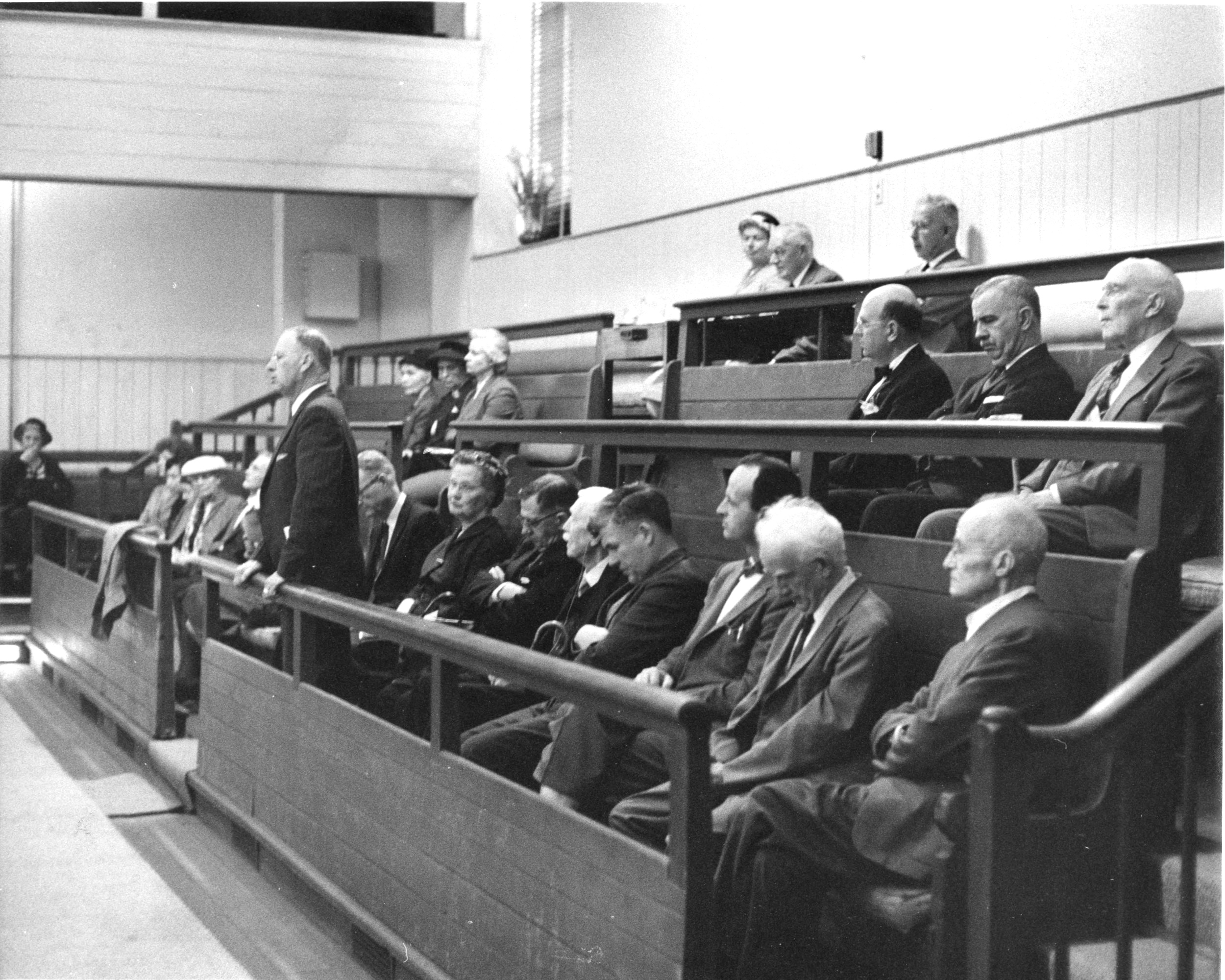
Arch Street Meeting House
You won’t see a steeple or stained glass windows on a Quaker meeting house.
Generally speaking, Quaker meeting houses are two-story wood-frame buildings with two separate entrances at the front of the building, a large first-floor meeting space with benches, and an interior second-story gallery. Since worship involves silent contemplation without clergy or ritual, there is no need for an altar, pulpit, or other religious symbols.
Meeting houses carry the Quaker ideals of simplicity, plainness, and equality; Arch Street Meeting House is no exception. The Quaker building tradition is reflected in the simple yet high-quality materials and notable craftsmanship used in construction. Known for their utilitarian design and minimal detail or ornamentation, meeting houses typically blend into the environment by using local materials and construction practices.
The Arch Street Meeting House was designed in 1803-04 by Quaker master builder Owen Biddle Jr. The meeting house is an example of the Georgian architectural style and it incorporates a simple or plain Quaker design. As seen in his original drawings, Owen Biddle planned Arch Street to be three main rooms but they weren’t all built at once. The East Room and central meeting space were built in 1804 and the West Room followed in 1811.
Historic Arch Street Meeting House and Burial Ground recognize that the land on which the meetinghouse and burial ground sits is within the Lenape or Delaware Homeland. As such, the Arch Street Meeting House Preservation Trust (ASMHPT), which operates the meeting house and grounds as a historic site on behalf of the Philadelphia Yearly Meeting of the Religious Society of Friends, acknowledges this fact and will, to the best of its ability, share this story with visitors to the site.
Owen Biddle, Jr. & The Carpenters Company of Philadelphia
Before there were architects, buildings were designed and built by the same person, usually known as a master carpenter or carpenter builder. The carpenter builder of the Arch Street Meeting House was Owen Biddle Jr. The career of Owen Biddle Jr. was cut short by his death in 1806 at the age of 32. He is buried on the property.
Owen Biddle Jr. was born in 1774, a Quaker, and one of ten children. He was trained as a carpenter and partnered with fellow carpenter Joseph Cowgill from 1799 to 1801, before setting off to work on his own. He was a member of the Carpenters Company, which is a group formed in 1724 and most of the well-known builders of the day were members. And he wrote one of America’s first carpentry books, The Young Carpenters Assistant, which to this day remains a hallmark of American building.
We know that Biddle designed the meetinghouse because his name is on the plans for the proposed building but it was not until 1968 that it was confirmed that he was responsible for construction. During a restoration and construction project, his initials were found scratched into the roof trusses.
Little is known about Owen Biddle, Jr.’s work. He had a hand in creating the first covered bridge in America, the Schuylkill Permanent Bridge, which was designed by Timothy Palmer. Biddle is also credited with the construction of the Pennsylvania Academy of Fine Arts (PAFA) building (1805-06). He built a handful of homes in Philadelphia, some still stand in the Society Hill neighborhood.
